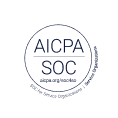
How to include user research in early product development

Involving user research early in product development is integral to the success of a product. It allows user insight to guide the process before any heavy investment is made into developing certain products or features.
This should avoid costly mistakes and ultimately save the company money, time, and resources from the discovery phase.
But how can you get research into this early stage?
Frist, let's touch on the importance of user research in early product development.
The importance of user research
User research is a crucial aspect of product development that helps businesses understand their target audience’s needs, preferences, and behaviors. By conducting user research, companies can gather valuable insights that inform product design, development, and optimization. This, in turn, enables them to create products that meet the needs of their users, leading to increased customer satisfaction, loyalty, and ultimately, revenue growth.
User research in product development is essential for several reasons:
- Informed decision-making: Conducting user research provides businesses with data-driven insights that help them make informed decisions about product development, reducing the risk of launching a product that may not meet user needs.
- Improved user experience: By understanding how users interact with their products, businesses can design and develop products that are intuitive, user-friendly, and meet the needs of their target audience.
- Competitive advantage: Companies that prioritize user research can gain a competitive advantage by creating products that meet the needs of their users, setting them apart from competitors who may not prioritize user research.
- Cost savings: Conducting user research can help businesses avoid costly mistakes, such as developing a product that may not meet user needs, or investing in features that may not be used.
Now that we know why user research is so critical to early product development, let's look at some of the main research methods used at this stage.
User research methods in early product development
There are various user research methods that businesses can use to gather insights about their target audience.
These methods can be categorized into qualitative and quantitative research methods.
Qualitative user research methods
Qualitative user research methods involve gathering non-numerical data through methods such as:
- User interviews: One-on-one conversations with users to gather in-depth insights about their experiences, needs, and preferences.
- Usability testing: Observing users as they interact with a product or prototype to identify usability issues and areas for improvement.
- Focus groups: Focus group discussions can be moderated, unmoderated, remote, or in person, and are a great way gather candid feedback and insights about a product or concept.
- Contextual inquiry: Observing users in their natural environment to gather insights about their behaviors and needs.
Quantitative user research methods
Quantitative user research methods involve gathering numerical data through methods such as:
- Surveys: Online or offline questionnaires that gather data from a large sample size of users.
- Analytics tools: Tools that track user behavior, such as website analytics or mobile app analytics.
- A/B testing: Testing two or more versions of a product or feature to determine which one performs better.
- User testing: Testing a product or feature with a small group of users to gather feedback and insights.
Champion user research early in product development
Be proactive in championing and involving user research in early product development. If you aren’t in the right meetings, find out when they happen and join.
If UX is new to the organization or not yet an integral part of the process, make an effort to review the current roadmap and see where you can fit in. Once you’ve started to prove the value of user research, push to be part of the team that creates that UX roadmap.
As the backbone of user-centric products, user research should be welcomed into the earliest aspects of product planning. Qualitative data is crucial for understanding user emotions and preferences, complementing quantitative data to lead to better product decisions.

Build better products faster with user feedback
Discover how to implement customer-centric product development without sacrificing speed.





